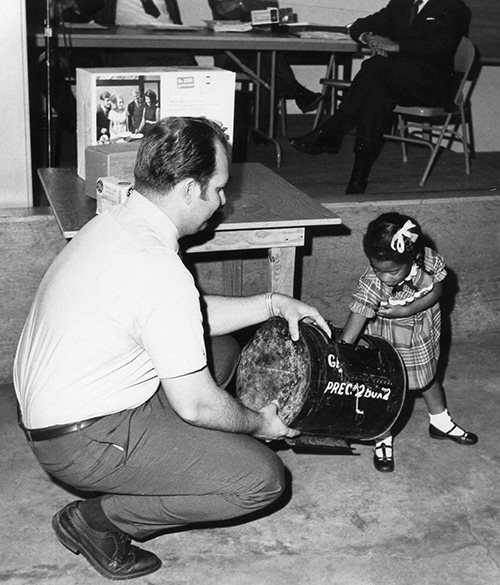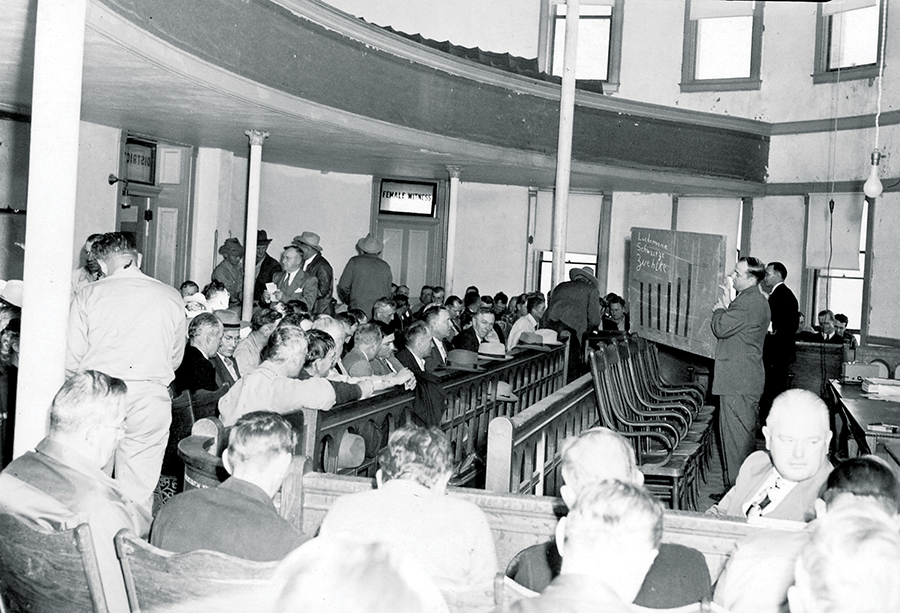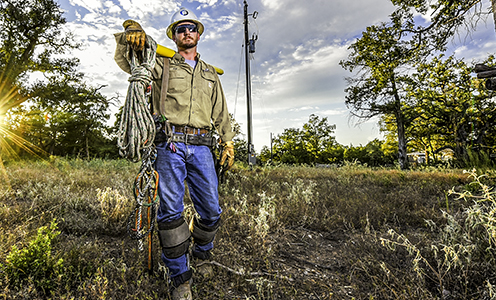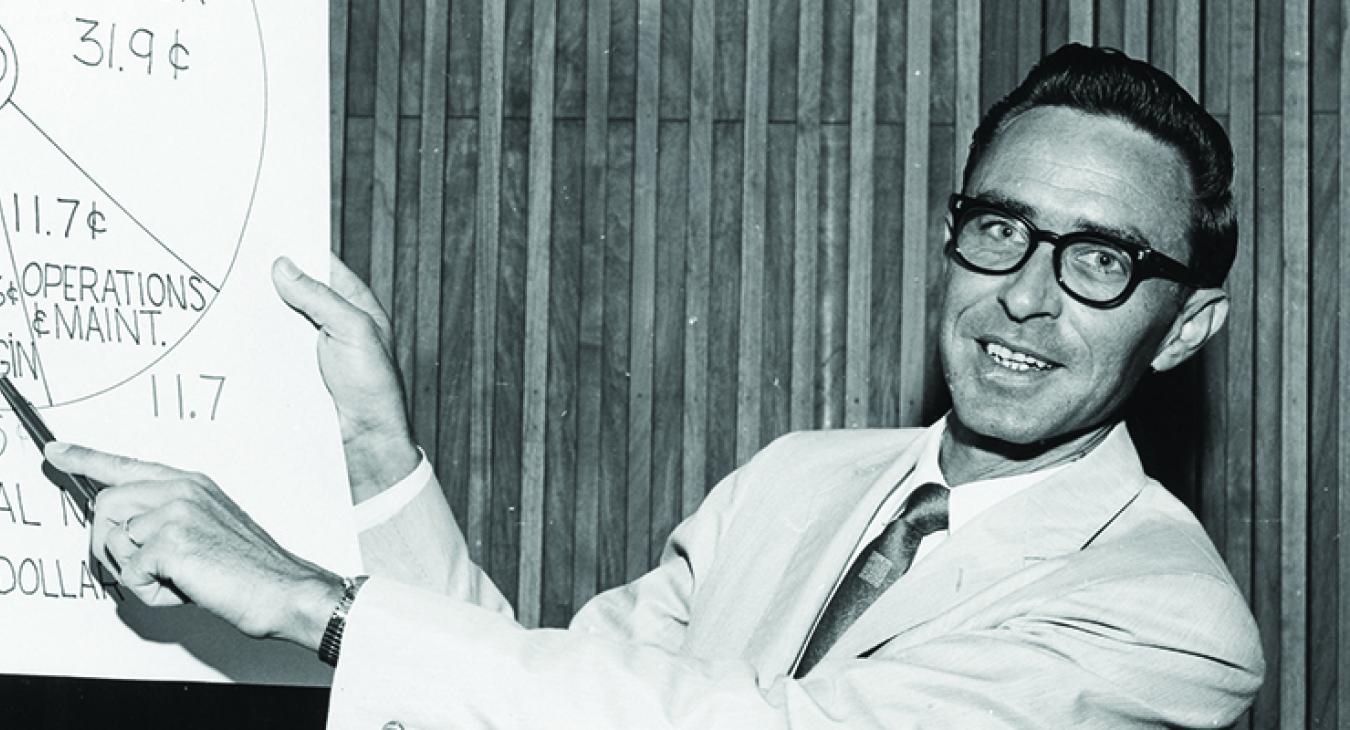Before there was PowerPoint, there were pie charts on posters, such as this one held aloft by Henry Umscheid at the 1964 meeting. Umscheid later became the cooperative’s general manager.
The decades-long history of electric cooperatives’ annual meetings
Excerpted from a story for Bluebonnet Electric Cooperative’s pages in Texas Co-op Power magazine, May 2014, by Ed Crowell:

In Texas during the 1940s, access to electricity was a given in most cities, but was new to rural residents. So, too, were the democratically controlled cooperatives that provided that electricity. Residents were member-owners, not customers, and they exercised control over their co-ops’ rates and development.
Annual meetings of cooperative members across Central Texas provided a special time to gather and share experiences, hear speeches from current and would-be Board members and then vote in their elections. Major actions that impacted co-ops’ growth and financial health were on the agendas.
The Annual Meeting was typically a festive event: Members dressed up for the occasion, socialized and ate together, usually barbecue. They welcomed visiting speakers ranging from state legislators to federal lawmakers and governors.
They roamed through tents and booths looking at the latest in electric machinery, appliances and home comfort systems.
Entertainment came in the form of singers, dancers or storytellers. At some meetings, inspirational speakers gave members messages of hope and motivation. Children were treated to magicians, movies and balloons.
The drawing of door prizes was the highlight of the day for many members (as it often is today). With luck, a member could take home a prize from among an impressive array of items donated by local merchants and service companies.
There was plenty of fun, but the serious, primary purpose of annual meetings was summed up on the 50th anniversary of the Rural Electrification Administration [established in 1935], which backed loans that the co-ops used to build their systems. This is how the National Rural Electric Cooperative Association described that history in its 1985 anniversary book, “The Next Greatest Thing.”
“Annual meeting day became a high point of the year for many rural families … Once a year, under the co-op’s bylaws, the members assumed control. Assembled in annual meetings, they heard and acted upon the reports of their officers and employees. They elected new directors or re-On Aug. 2, 1939, the Lower Colorado River Electric Cooperative received its state charter to provide electricity to residents in 11 area counties. In 1964, 1,400 members gathered and unanimously voted to rename the cooperative Bluebonnet.






